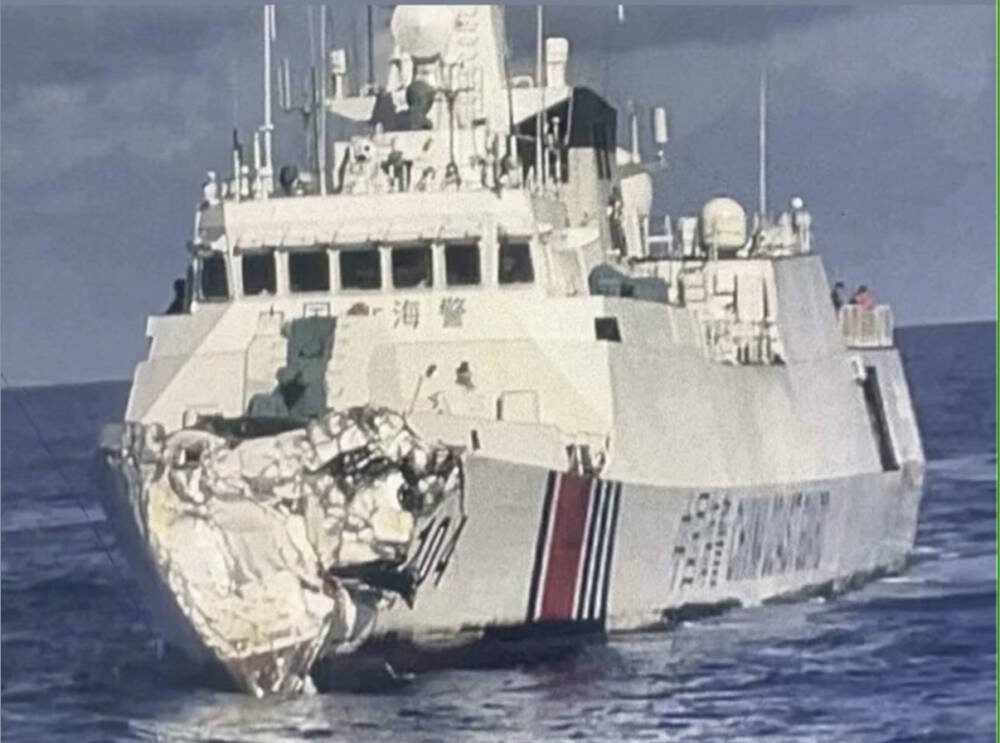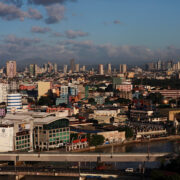Chinese research ship leaves Panatag but mothership remains

Xiang Yang Hong 10, one of two Chinese research ships recently spotted off Panatag (Scarborough) Shoal, has left the vicinity although its mothership, Zhu Hai Yun, remains in the area.
Maritime security expert and SeaLight director Ray Powell told the Inquirer on Thursday that Xiang Yang Hong 10 is now 100 nautical miles (NM) away from the shoal although it did not seem to be on its way back to China.
“It’s hard to say why it left since I don’t really know why it was there in the first place,” Powell, the program head of the Stanford University project, said in a message on X (formerly Twitter). “But the drone mothership is still there.”
The two Chinese ships were sighted near the shoal after the collision between a People’s Liberation Army-Navy warship and a China Coast Guard (CCG) vessel that were trying to block BRP Suluan, a Philippine Coast Guard (PCG) vessel helping Filipino fisherfolk.
On Aug. 12, Powell said that Chinese ships were seen in the area moving in a “parallel sweep” track, which was indicative of a search and rescue (SAR) operation. But he ruled out the possibility that Xiang Yang Hong 10 and Zhu Hai Yun were deployed for SAR.
Aside from Zhu Hai Yun, six CCG ships and six maritime militia vessels remain in the 25 to 30 NM “exclusion zone” off the shoal as of Thursday, according to him.
He said that the PCG’s BRP Cape San Agustin was on patrol outside the shoal’s exclusion zone but no CCG ship appeared to be shadowing it.
‘Strategic communication’
On the other hand, the presence of the Chinese research vessels off Panatag may be Beijing’s attempt to soften its image after the “embarrassing collision” between its ships, according to defense analyst Chester Cabalza.
“Beijing is experimenting with strategic communication by using hard and soft powers to win approval from their own armed forces and the international community,” Cabalza, founding president of the Manila-based think tank International Development and Security Cooperation, told the Inquirer.
He noted that the deployment of research ships might also serve as an “internal audit” to investigate what went wrong in the collision which he said disregarded navigational precision and marine engineering standards.
According to him, the Philippine government should continue advancing its strategies of transparency, lawfare, military modernization, multiple defense partnerships and a self-reliant defense posture—a formula he described as carrying “formidable appeal to the international community.”
China’s aggressive actions around the shoal are based on what Powell termed as “exclusion zone enforcement” in open defiance of the 2016 landmark arbitral ruling which declared the area a traditional fishing ground among the Philippines, China and Vietnam.
Beijing claims sovereignty over almost the entire South China Sea but the international ruling effectively dismissed ts sweeping claims as void and baseless.
In the Senate, a resolution has been filed urging the executive branch to exert legal and diplomatic pressure upon the Chinese government, to cease all ecologically destructive activities in the West Philippine Sea and to pay reparations for damage already done. —WITH REPORT FROM TINA G. SANTOS

















